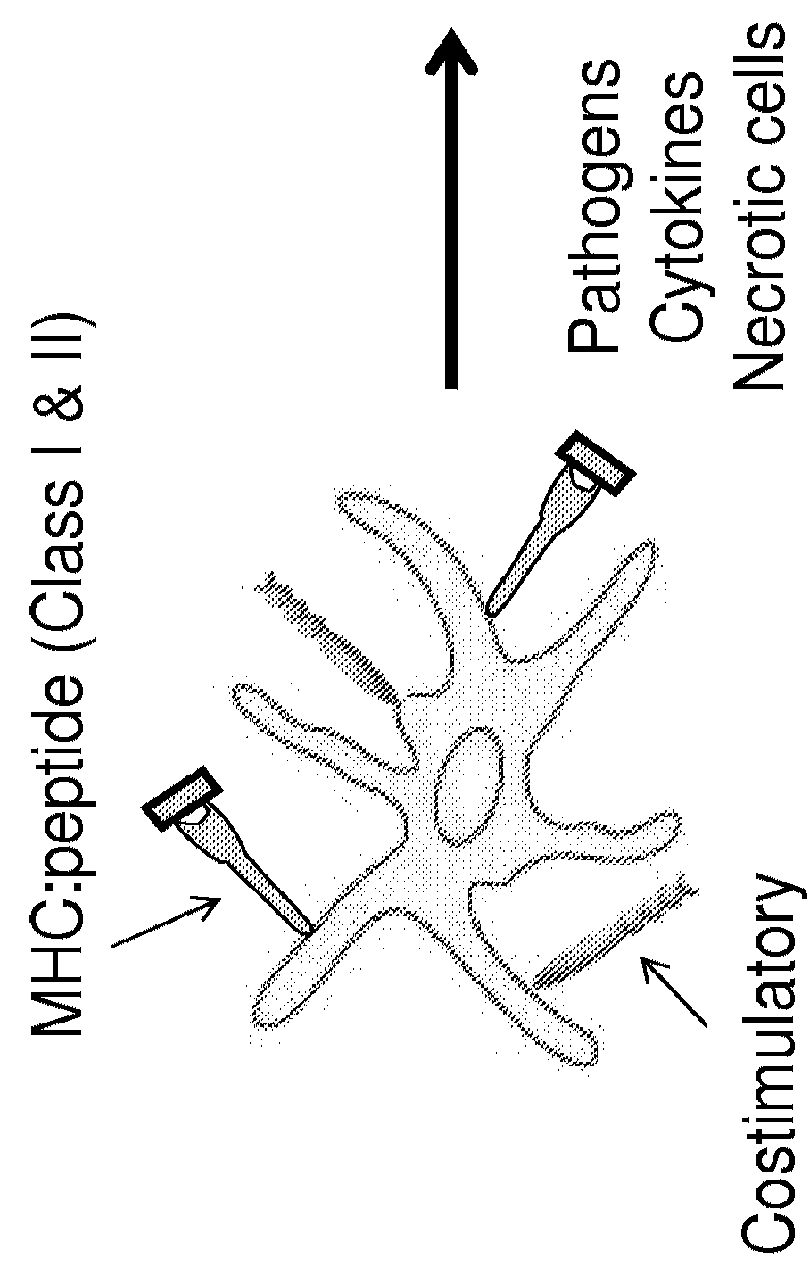Method of immunotherapy for treament of human papillomavirus infection
a human papillomavirus and immunotherapy technology, applied in the field of reversing immune suppression, can solve the problems of morbidity and mortality, easy availability, and the second leading cause of cancer-related deaths among women, and achieve the effect of preventing new lesions from developing
- Summary
- Abstract
- Description
- Claims
- Application Information
AI Technical Summary
Benefits of technology
Problems solved by technology
Method used
Image
Examples
example 1
Generation of Human LC
[0068]As HPV only infects human beings, human immune cells were used to study the interaction of HPV with LC. Primary LC that were isolated from human skin, becoming activated through the migration process and express high levels of MHC and costimulatory molecules. Therefore, it is not feasible to isolate primary unactivated skin-derived LC from human donors with which to conduct meaningful in vitro long term and reproducible functional studies. For the experiments, primary LC were generated from peripheral blood monocytes isolated from healthy donors using differentiating cytokines ex vivo. Circulating monocytes were direct precursors of epidermal LC in vivo. Applicants and others have shown that ex vivo derived LC express the same surface markers as epidermal LC (Langerin, E-cadherin, CD11c, CD1a, high MHC class II and intracellular Birbeck granules) (FIG. 1) and can be used consistently for in vitro LC studies.
[0069]FIG. 1 shows that human monocyte-derived L...
example 2
[0077]Establishing whether IRX-2, which is currently available for clinical use, can activate LC previously exposed to HPV16 is necessary. The effect of IRX-2 on LC expression of activation markers was reported in Example 1, In the next experiments, the strength of IRX-2 was tested by measuring cytokine secretion, migration, and activation of alloantigen-specific T cells.
[0078]Activation of APC, like LC, is required for successful interaction with and activation of primary T lymphocytes. Inflammatory cytokines have the ability to activate APC, resulting in maturation and an increase in antigen-presenting function. IRX-2 is a promising immune modulator that has the potential to influence the immunostimulatory capacity of LC when applied locally to HPV-infected epithelium. In order to determine whether IRX-2 phenotypically and functionally activates LC exposed to HPV, cytokine / chemokine secretion and migration as well as the ability to stimulate alloantigen-specific T cell responses w...
PUM
| Property | Measurement | Unit |
|---|---|---|
| concentration | aaaaa | aaaaa |
| chemical | aaaaa | aaaaa |
| time | aaaaa | aaaaa |
Abstract
Description
Claims
Application Information
 Login to View More
Login to View More - R&D
- Intellectual Property
- Life Sciences
- Materials
- Tech Scout
- Unparalleled Data Quality
- Higher Quality Content
- 60% Fewer Hallucinations
Browse by: Latest US Patents, China's latest patents, Technical Efficacy Thesaurus, Application Domain, Technology Topic, Popular Technical Reports.
© 2025 PatSnap. All rights reserved.Legal|Privacy policy|Modern Slavery Act Transparency Statement|Sitemap|About US| Contact US: help@patsnap.com



